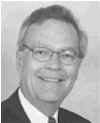|

|
Ties
that Bind
Virginia's
Sister Cities
This
July, a delegation from Neyagawa, Japan will visit
Newport News to celebrate their quarter-century
relationship as sister cities. A group of 25 fifth
graders has traveled already to the coastal Japanese
city for a cultural exchange. Last October, a group
from Rueil-Malmaison, France gathered at Thomas
Jefferson’s Poplar Forest retreat near Lynchburg
to mark a decade as that city’s European sibling.
Locals conducted the tour in French for their
visitors. And, in February 2006, the City of Falls
Church announced it had entered into a sister city
agreement with Kokolopori in the Democratic Republic
of the Congo.
In
all, according to Sister
Cities International, 13 Virginia cities and two
counties – Arlington and Henrico – boast
sisterly ties with 49 cities on every continent
except Antarctica. Richmond and Roanoke are tied for
the most sister-city relationships. Between them,
they have 14 siblings in Poland, the United Kingdom,
Japan, Namibia, China, South Korea, Brazil, Kenya,
Russia and France.
The
sister-city movement is usually traced to President
Dwight D. Eisenhower. In 1956, he sponsored a White
House conference that proposed a people-to-people
program that would involve “individuals and
organized groups at all levels of society in citizen
diplomacy, with the hope that personal
relationships, fostered through sister city, county
and state affiliations, would lessen the chance of
future world conflicts.” But the concept –
sometimes referred to as “twinning” or
“friendship cities” – actually dates back to
World War II, when British cities offered help to
European cities devastated by the war. In 1944,
Coventry, England, linked with Stalingrad in the
former Soviet Union, based on the shared destruction
both their cities suffered due to German bombing.
(“International Sister-Cities: Bridging the
Global-Local Divide,” The American Journal of
Economics and Sociology, January 2001)
The
first link between a British city and a former enemy
town occurred in 1947 when a five-member delegation
from Bristol visited Hanover, Germany. According to
one account, it was not an easy trip. First the
group had to get permission to visit. Then, with no
public transportation available, Hanover’s mayor
almost missed the meeting. Food rationing made it
difficult for the Germans to play host to their
guests, and they could serve only tea and dry
biscuits. The British, of course, were ill at ease
with their former enemy, but on their way home, the
group determined to send food and clothes to the
sister city. Hanover, not having much to exchange,
decided to send its renowned musicians, and a
“music for old shoes” program developed. In 1951
the two cities set up a “young scholars” program
and since then, the exchange has involved more than
20,000 young people from the two towns (“Germany
and the Town Twinning Movement,” Contemporary
Review, January 2003).
Since
the mid-1950s, the sister-city movement in the U.S.
has flourished. Sister Cities International,
originally a part of the National League of Cities,
became a separate non-profit corporation in 1967. In
2006, it celebrated its 50th anniversary. Today, the
organization represents 695 communities in the U.S.
with 1,992 partnerships in 134 nations.
Cities
seeking sister communities are encouraged to set up
local organizations. Sister
Cities of Newport News formed in 1982 when the
mayors of Newport News and Neyagawa, Japan signed an
official Declaration of Sisterhood that year. In
Portsmouth, the Sister
Cities Commission is a part of the mayor’s
office. The city has sister city relationships with
Portsmouth, England, Dunedin, New Zealand and
Kericho, Kenya.
In
“How to Find a Sister City,” a pamphlet
published by Sister Cities International, the
organization outlines an elaborate process for
seeking a sister city that it compares to “the
intricate dance of matrimony, beginning with the
awkward days of courtship to well beyond a golden
anniversary.” It suggests that a sister-city
committee include not only a mayor or city manager,
but also business professionals, physicians,
attorneys, chamber of commerce officials, youth and
educators, retirees, etc. Once a committee has been
formed and community support organized, a community
can fill out a “Request for a Sister City” form
available on the SCI Web site. The form asks for
such information as population; a brief geographical
description of the community; principal economic
activities in categories such as agriculture,
industry, technology, tourism and services; as well
as the type of sister city activities envisioned.
These might include arts and culture; economic
development; education; environment; health and
public safety; municipal cooperation; technology and
communication; or youth exchange.
At
first sister-city relationships were formed to
promote cultural ties between cities with similar
names or economies. Richmond linked up with Richmond
upon Thames in the United Kingdom. Hampton paired
with Southampton, also in the UK, and Virginia Beach
adopted Miyazaki, Japan, and Moss, Norway, both
coastal towns. More recently, sister cities have
been chosen to encourage economic development or for
environmental reasons. South Boston and its sister
city Leverano in Italy are both in wine-growing
regions. Kokolopori, the City of Falls Church’s
sibling in the Democratic Republic of the Congo,
contains a 1,860- square-mile forest reserve that
includes 1,500 of the rarest of great ape species.
In
the Old Dominion, sister-city activities have
included student-teacher exchanges, municipal
official exchanges, Japanese language courses; and
even a visit from the director of a French museum to
the Roanoke area to view the restoration work on
Jefferson’s Poplar Forest home.
During
that visit, Bernard Chevallier, the director/
curator of the museum at Chateau de Malmaison –
the home of Napoleon and Josephine – traveled to
Bedford with the sister-city group to lay a wreath
on the National
D-Day Memorial.
“Sometimes
war is necessary to get the peace,” he said. It
seems Eisenhower’s vision of citizen diplomacy has
finally come full circle.
NEXT:
Pick 4 or Mega Millions: Lottery Games in Virginia
--
April 16, 2007
|
|
